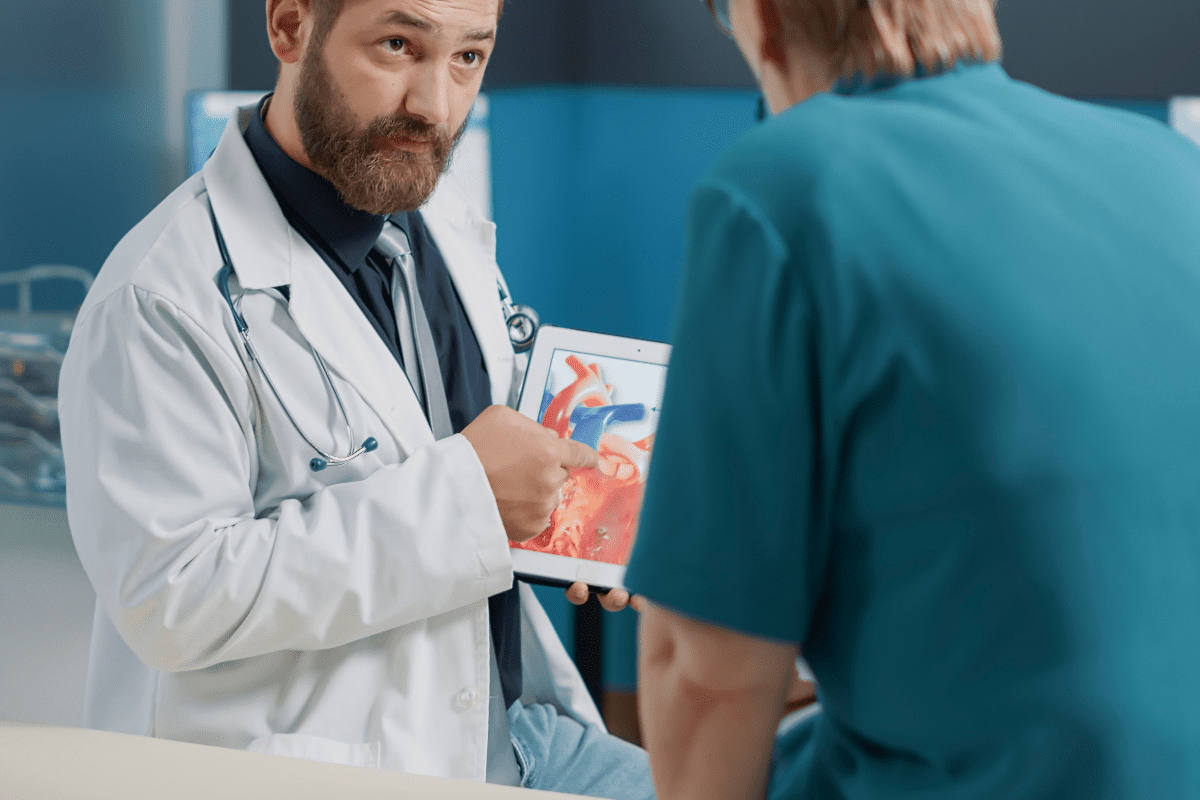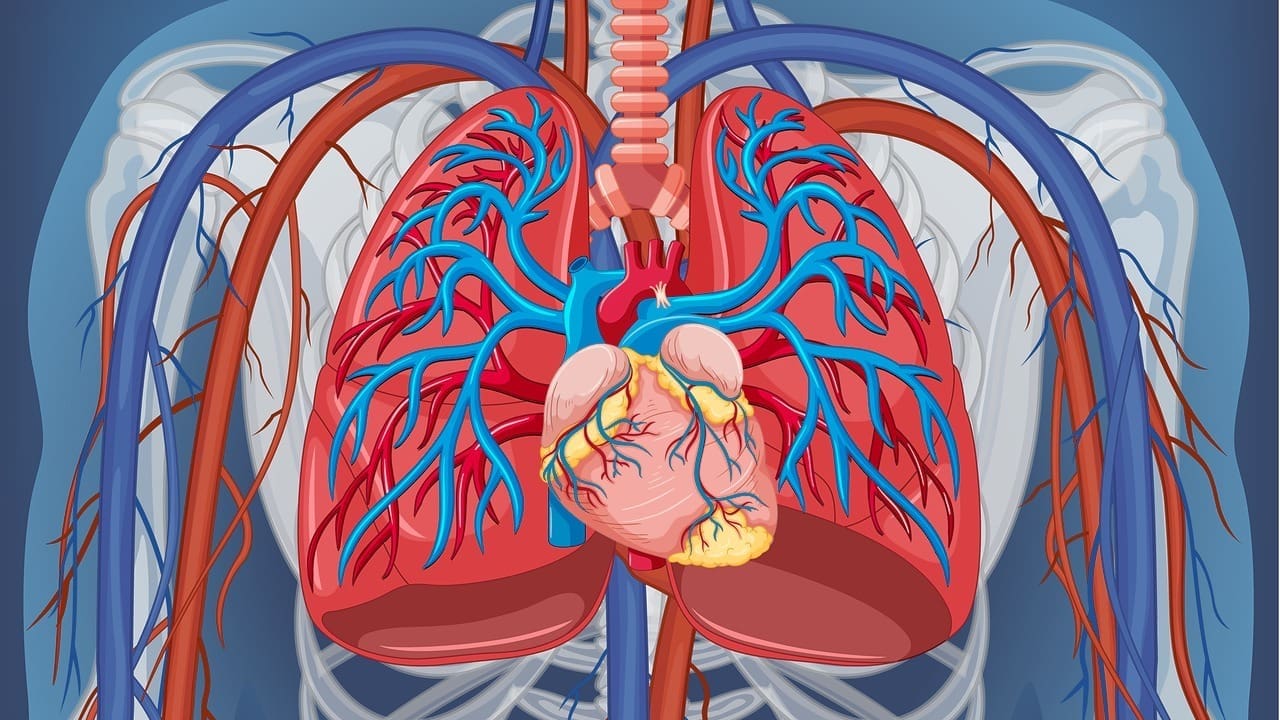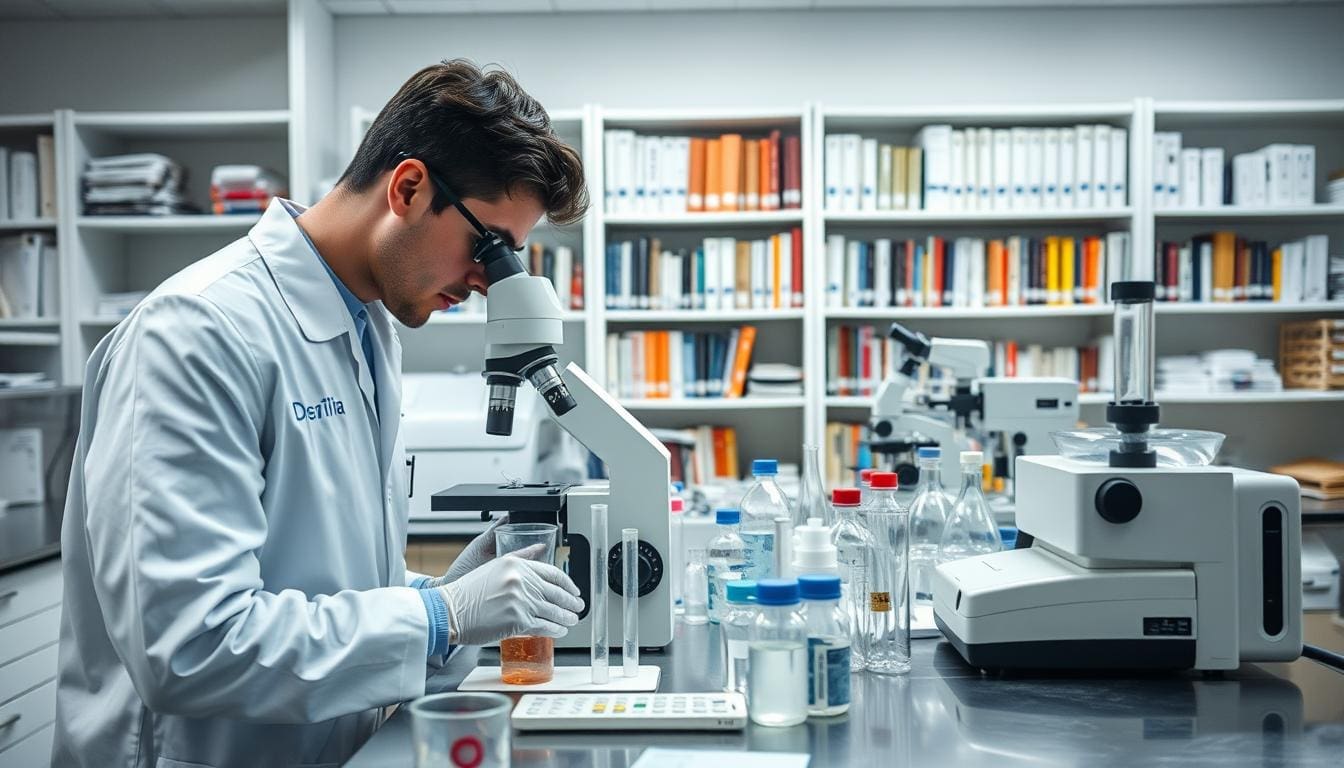Last Updated on November 27, 2025 by Bilal Hasdemir

Getting ready for a PET scan can feel overwhelming, mainly because of the medication management. At Liv Hospital, we put your safety and comfort first. It’s important to know the rules for taking medication before a PET scan to get accurate results and feel at ease.Can you take tylenol before a pet scan? Know medication guidelines before your scan.
Usually, you can keep taking your regular, non-diabetic medicines, like Tylenol, unless your doctor tells you not to. This rule helps keep your daily life as normal as possible while making sure the PET scan works well.
Always listen to what your doctor says about your medications. They might have special rules for you based on your health and the PET scan you’re having.
Key Takeaways
- Continue routine, non-diabetic medications, including Tylenol, unless instructed differently by your doctor.
- Follow specific instructions from your healthcare provider regarding medication use before a PET scan.
- Understanding medication guidelines is key for accurate PET scan results.
- Liv Hospital prioritizes patient safety and comfort during PET/CT procedures.
- Preparation protocols at Liv Hospital are evidence-based to ensure a reassuring experience.
Understanding PET Scans and Their Diagnostic Value

PET scans are key in diagnosing and managing many health issues, like cancer and neurological disorders. They show detailed images of how the body works, helping doctors spot problems and plan treatments.
What is a PET Scan?
A PET (Positron Emission Tomography) scan uses a special tracer to see how active the body’s cells are. It’s great for finding cancer, tracking its growth, and checking if treatments work.
Common Medical Conditions Diagnosed with PET Scans
PET scans help diagnose and manage several health issues, including:
- Cancer diagnosis and staging
- Neurological disorders such as Alzheimer’s disease and Parkinson’s disease
- Cardiovascular disease
They give doctors a peek into the body’s metabolic processes. This helps find problems early and plan specific treatments.
How PET Scans Differ from Other Imaging Tests
PET scans are different from CT scans or MRI because they show metabolic activity, not just body structure. They can spot issues at the molecular level, often before other tests can.
When paired with CT in a PET-CT scan, they offer even more detailed information. This combines functional and anatomical data in one scan.
The Technology Behind PET-CT, PET/CT, and PETCT Scans

PET-CT scans are a big step forward in medical imaging. They mix the metabolic info from Positron Emission Tomography (PET) with the body details from Computed Tomography (CT). This mix has changed how we diagnose diseases.
Combining Positron Emission Tomography with CT Imaging
PET and CT work together to get both functional and anatomical info at the same time. PET imaging shows how tissues and organs work, while CT imaging gives detailed body pictures. This combo helps doctors find and understand abnormal activity in the body.
This method is key in fighting cancer. It helps spot tumors, see how active they are, and how far they’ve spread. This info helps doctors plan better treatments.
How the Combined Technology Enhances Diagnostic Accuracy
By mixing PET and CT, we get a clearer picture of diseases. The metabolic info from PET adds to the body details from CT. This makes it easier to spot and understand problems.
Improved diagnostic accuracy means better treatments and outcomes for patients. For example, in cancer, PET-CT scans can tell if a growth is cancerous or not. They also check how well treatments are working and if cancer comes back early.
Types of Radioactive Tracers Used in PET Imaging
PET imaging uses special tracers to see how the body works. The most used one is Fluorodeoxyglucose (FDG). It’s like a sugar that tumors use a lot.
- FDG shows how tissues use glucose.
- Fluorothymidine (FLT) checks how fast cells grow.
- Oxygen-15 and Nitrogen-13 look at blood flow.
The right tracer depends on what we want to know. New tracers are being made to help PET imaging do even more in medicine.
Can You Take Tylenol Before a PET Scan?
It’s important to know the rules for pain meds like Tylenol before a PET scan. Many patients wonder which meds are okay to take before this test.
General Guidelines for Pain Medications
Usually, you can keep taking your regular meds unless your doctor tells you not to. This includes pain meds like Tylenol. But, you must tell your doctor about all meds you’re taking, even over-the-counter ones.
“Always talk to your doctor or the PET scan team about your meds,” says a nuclear medicine expert. “This helps avoid any bad interactions or effects on the scan results.”
What Medical Providers Recommend About Tylenol
Most doctors say it’s okay to take Tylenol before a PET scan, as long as you follow the directions. “Tylenol doesn’t mess with PET scan results,” says a radiologist. “But, always listen to your doctor’s advice on meds before the scan.”
Potential Effects of Tylenol on Scan Results
Even though Tylenol usually doesn’t mess with PET scan results, any medicine can. So, it’s key to tell your doctor about all meds you’re taking.
In short, you can usually keep taking Tylenol before a PET scan unless your doctor says not to. Always listen to your medical team’s advice to get the best results from your PET scan.
Medication Guidelines for Different Types of Imaging Procedures
Knowing the right medication guidelines for imaging tests is key for good results. Tests like PET scans and CT scans have their own rules for what medications to take or avoid.
PET Scan Medication Protocols
For PET scans, some medications might need to be changed or skipped. PET scan medication protocols often mean managing diabetes meds and avoiding some over-the-counter drugs.
Before a PET scan, tell your doctor about all your meds. This includes any diabetes meds, as they might need adjusting.
CT Scan with Contrast Medication Guidelines
CT scans with contrast have their own set of medication rules. The contrast agents used can react with some medications, causing problems.
It’s important to tell your doctor about all your meds before a CT scan with contrast. This is key for avoiding bad reactions, like with some diabetes meds.
Medications to Avoid Before Imaging Tests
Some meds should be skipped before imaging tests like PET scans or CT scans. Medications to avoid often include those that mess with the imaging or contrast agents.
- Diabetic medications may need adjustment.
- Stay away from over-the-counter meds like acetaminophen or ibuprofen.
- Tell your doctor about any herbal supplements or vitamins too.
Following your doctor’s medication advice is vital for a successful imaging test.
Comprehensive Preparation for Your PET Scan
To get the best results from your PET scan, it’s key to prepare well. Good preparation can make the scan more accurate and effective.
Dietary Restrictions and Fasting Requirements
Before your PET scan, you’ll need to follow a special diet. You might need to fast for 4 to 6 hours. This helps keep your body’s metabolic state steady.
Try to avoid sugary foods and drinks too. They can change your blood sugar and affect the tracer’s spread. For more advice, talk to your doctor or the imaging center.
Hydration Guidelines
Drinking enough water is important before your PET scan. You should drink plenty of water to help the tracer spread evenly. But, make sure to follow your healthcare team’s hydration advice.
Activity Recommendations Before the Procedure
Try to avoid strenuous activities before your scan. They can mess with the tracer’s spread. Also, get to the imaging center early and relaxed to make the process smoother.
The Day of Your PET Scan: Step-by-Step Process
When you have a PET scan, knowing the steps helps a lot. The process is designed to be easy and comfortable. But, knowing what to expect can make you feel better.
Check-in and Administrative Procedures
First, you’ll check in. This means verifying your identity and confirming your appointment. You’ll also fill out some paperwork. Try to arrive a bit early to get this done.
Important documents to bring:
- Your appointment confirmation
- Identification
- Insurance information (if applicable)
- Any relevant medical records or previous scan results
Pre-Scan Preparations
After checking in, you’ll go to a prep area. Here, you’ll change into a gown. This is to remove any clothes that might get in the way of the scan. You’ll also take off jewelry, glasses, and metal objects.
A healthcare professional will explain the scan in detail. They’ll answer your questions and prepare you for the tracer injection.
“The preparation for a PET scan is relatively straightforward. Patients are usually required to change into a gown and remove any metal objects. The staff will guide you through each step to ensure your comfort and safety.” – A Nuclear Medicine Specialist
Tracer Injection and Uptake Period
Then, you’ll get the radioactive tracer through an IV line. This tracer will go to the areas of your body being studied. It takes some time to spread out.
After the injection, you’ll wait for the uptake period. This time varies based on the scan and tracer. You’ll be in a quiet area, asked to stay calm and relaxed. This helps the tracer spread evenly.
| Procedure Step | Description | Approximate Time |
| Check-in | Verifying identity, completing paperwork | 15 minutes |
| Pre-Scan Preparation | Changing into a gown, removing metal objects | 10-15 minutes |
| Tracer Injection | Injecting the radioactive tracer | 5 minutes |
| Uptake Period | Waiting for the tracer to distribute | 30-60 minutes |
Knowing the PET scan steps can make it less scary. By understanding what happens, you can prepare better. This helps everything go smoothly.
How Long Does a PET-CT Scan Take?
Many patients wonder how long a PET-CT scan will take. It’s not just the scanning itself. The whole process, from start to finish, includes several steps.
Typical Duration from Check-in to Completion
A PET-CT scan usually takes about 2 hours. This includes getting ready, getting the tracer, waiting for it to work, and the scan itself.
Here’s how the 2 hours are broken down:
| Procedure | Time |
| Check-in and Preparation | 15-30 minutes |
| Tracer Injection and Uptake | 30-60 minutes |
| Scanning Process | 30-45 minutes |
Factors That May Extend Scan Time
Several things can make a PET-CT scan take longer. These include how complex the scan is, if more images are needed, or if the tracer doesn’t work right. Following pre-scan instructions carefully can help avoid delays.
Things that might make the scan longer include:
- Need for extra scans or views
- Technical problems with the equipment
- Issues with how the tracer spreads
Post-Scan Monitoring Period
After the scan, patients are watched for a short time. This is to check for any quick reactions to the tracer and to make sure they’re safe. This monitoring usually lasts about 15-30 minutes.
Knowing how long a PET-CT scan takes and what it involves helps patients prepare. It reduces anxiety and makes the experience smoother.
Who Performs PET Scans? The Medical Team Explained
The team behind PET scans is key in diagnostic imaging. These scans are complex and need a lot of skill to do right.
Role of Certified Nuclear Medicine Technologists
Certified nuclear medicine technologists lead in PET scans. They get special training to use the equipment and give out the radioactive tracers. They make sure patients are in the right spot and the tracer is given correctly.
Certification for these technologists means they’ve finished a degree and passed a test from a group like the Nuclear Medicine Technology Certification Board (NMTCB) or the American Registry of Radiologic Technologists (ARRT).
Supervision by Nuclear Medicine Physicians and Radiologists
Nuclear medicine doctors and radiologists watch over PET scans. They look at the images and match them with the patient’s history. They decide on a diagnosis or what to do next.
Doctors know a lot about radioactive tracers and PET scans. Radiologists understand imaging and diagnosis. Together, they make sure PET scans help patients.
Coordination with Your Referring Physician
The PET scan team works with the doctor who sent the patient for the scan. They check the patient’s history and what they need from the scan. They adjust the scan as needed.
After the scan, the team shares the results with the doctor. The doctor then uses this info to plan the patient’s care. This teamwork makes sure PET scans help in diagnosing and treating diseases.
Special Considerations for Patients with Chronic Conditions
Patients with chronic conditions need to take extra steps before a PET scan. Health issues like diabetes, kidney disease, and allergies require special care. This ensures the scan is safe and effective.
Guidelines for Diabetic Patients
Diabetic patients must manage their blood sugar levels closely for a PET scan. They should talk to their doctor about changing their medication before the scan. Fasting for the PET scan can affect blood sugar levels, so following dietary instructions is key.
The American Diabetes Association advises diabetic patients about fasting’s impact on blood glucose. “Patients with diabetes should work with their healthcare provider to adjust their insulin and monitor blood glucose before, during, and after the scan.”
| Condition | Pre-Scan Recommendations | Post-Scan Care |
| Diabetes | Adjust medication, monitor blood sugar | Resume normal medication, monitor blood sugar |
| Kidney Disease | Hydrate, review medication with doctor | Continue hydration, monitor kidney function |
Considerations for Patients with Kidney Disease
Patients with kidney disease should be careful with PET scans, even more so with contrast agents. Hydration is essential for processing the contrast. They should discuss their kidney disease with their doctor to assess risks.
Adaptations for Patients with Allergies or Sensitivities
Patients with allergies or sensitivities, like to contrast agents or medications, must inform their healthcare team. Alternative options or pre-medication may be considered to prevent allergic reactions. They should share their allergy history to ensure their safety.
By understanding and addressing these special considerations, patients with chronic conditions can safely undergo a PET scan. This ensures a safe and effective diagnostic experience.
Potential Risks and Side Effects of PET Scans
PET scans are a key tool for doctors, but it’s important to know the risks and side effects. These scans use small amounts of radiation and radioactive tracers. This can affect some patients.
Radiation Exposure Considerations
PET scans use a small amount of radiation from the tracer. Most patients find this safe. But, it’s key to talk to your doctor about any risks, like if you’ve had other tests with radiation.
After a PET scan, it’s wise to stay away from young kids and pregnant women for a bit. Drinking lots of water helps get rid of the tracer faster.
| Guideline | Recommendation |
| Contact with Children and Pregnant Women | Minimize close contact for 24 hours |
| Hydration | Drink plenty of fluids |
Possible Reactions to Radioactive Tracers
Some people might react to the tracers in PET scans. These reactions can be mild or serious. It’s important to tell the medical team about any allergies before the scan.
Common reactions to watch for:
- Redness or swelling at the injection site
- Itching or rash
- In rare cases, severe allergic reactions
Managing Anxiety and Claustrophobia During the Scan
For some, PET scans can cause anxiety or claustrophobia. Talking about these worries with your doctor can help find ways to feel better.
Strategies for managing anxiety:
- Relaxation techniques, such as deep breathing
- Having a companion present during the scan
- In some cases, mild sedation may be recommended
Knowing the risks and how to deal with them can make PET scans easier. This way, patients can get the most from the scan with less stress.
Conclusion: Key Takeaways About PET Scan Preparation
Getting ready for a PET scan is important. It helps make sure the scan is good and the results are right. Patients can help their doctors get the right info by knowing how to prepare.
The key takeaways from this article show why it’s important to follow certain steps before a PET scan. This includes eating right, managing medicines, and knowing about possible risks and side effects.
By listening to what healthcare professionals say, patients can help make the PET scan a success. This means knowing about the scan, asking questions, and talking about any worries or fears.
In the end, getting ready for a PET scan is key to getting good results. This article wants to help patients feel more confident about their PET scan experience by sharing important information.
FAQ
Can I take Tylenol before a PET scan?
It’s best to talk to your doctor before taking Tylenol or any other medicine before a PET scan. Tylenol is usually okay, but some medicines might affect the scan’s results.
What is a PET scan, and how does it differ from a CT scan?
A PET scan uses a radioactive tracer to see how the body works. It’s different from a CT scan, which uses X-rays to show the body’s structure. PET-CT scans use both to give a full picture of the body.
How long does a PET-CT scan take?
A PET-CT scan usually takes about 30 minutes to several hours. This includes getting ready and waiting for the tracer to work. The scan time can change based on the tracer, the area scanned, and the patient’s needs.
Can I take Tylenol before a CT scan with contrast?
Always check with your doctor before taking Tylenol or any other medicine before a CT scan with contrast. Some medicines might not work well with the contrast, so it’s important to follow the right steps.
What are the medication guidelines for PET scans?
For PET scans, you should keep taking your usual medicines, including Tylenol, unless your doctor says not to. But, some medicines might need to be changed or skipped before the scan.
How do I prepare for a PET scan?
To prepare for a PET scan, you might need to follow certain diet rules, fast, drink lots of water, and rest. Always listen to what your doctor or the imaging center tells you.
Who performs PET scans?
PET scans are done by certified nuclear medicine technologists. They work under the watch of nuclear medicine doctors and radiologists. This team makes sure the scan is done right and safely.
Are there any special considerations for patients with chronic conditions?
Yes, people with long-term conditions like diabetes, kidney disease, or allergies need special care before a PET scan. It’s key to tell the medical team about any health issues to take the right steps.
What are the possible risks and side effects of PET scans?
PET scans are usually safe, but there are risks like radiation exposure and reactions to the tracer. Some people might feel anxious or claustrophobic during the scan. Always talk to your doctor about any worries.
Is a PET scan the same as a PET-CT scan?
While often called the same, PET and PET-CT scans are not identical. A PET scan focuses on the body’s metabolic activity. A PET-CT scan adds CT imaging to give a more detailed view of the body’s functions and structure.
Reference
- Kapoor, M., et al. (2025). PET scanning. In StatPearls [Internet]. StatPearls Publishing. Retrieved October 10, 2025, from https://www.ncbi.nlm.nih.gov/books/NBK559089/
- Boellaard, R., et al. (2014). FDG PET/CT: EANM procedure guidelines for tumour PET imaging: version 2.0. European Journal of Nuclear Medicine and Molecular Imaging, 42(2), 328-354.https://link.springer.com/article/10.1007/s00259-014-2961-x






